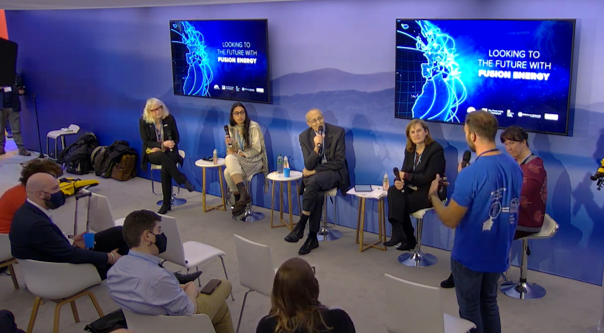
As an enthusiastic science communicator, IPP Director and Co-chair of EUROfusion’s governing body Prof. Sibylle Günter is no stranger to taking the stage and talking about fusion. Even then, the opportunity to take part in a discussion panel about fusion at COP26 in Glasgow was a highlight. EUROfusion spoke to her about fusion’s big representation in Glasgow, which was co-organised by EUROfusion member UKAEA and ITER.
What can you tell us about the atmosphere at the event?
It was my first COP meeting, so it was very exciting. It was obvious that the vast majority of the participants was very engaged and committed to achieve an agreement that would restrict the global temperature increase to 1.5 degrees. On the other hand, one needed unanimous agreement among more than 200 member states with very different economic interests and opportunities. A great challenge!
COP26 was the first time that fusion got to take the stage. What was that like?
It was great to present fusion as part of the solution, although it will only contribute in the second half of the century. There was great interest for our round-table discussion in the UK pavilion. As many participants as possible (given the COVID-19 restrictions) were in the pavilion, and about 700 people followed the discussion via YouTube. We were told that it was the most exciting event in the UK pavilion during the two-week conference.
What do you think we should bring to COP27 in Cairo next year in terms of fusion presence?
It would be nice if fusion would be considered as an energy source of the future by the COP participants, so a regular event in varying formats would be good.
From a Devil’s Advocate point of view, COP is about going climate neutral before 2050. What does fusion bring to that discussion?
For that reason, fusion has not been part of the plenary discussions where near-term dedicated goals were set. Nevertheless, even if we would achieve to become climate neutral by 2050, there would still be sufficient room for fusion energy. The global electricity consumption is predicted to rise by a factor of three between 2050 and 2100, plenty of room for another energy source!

